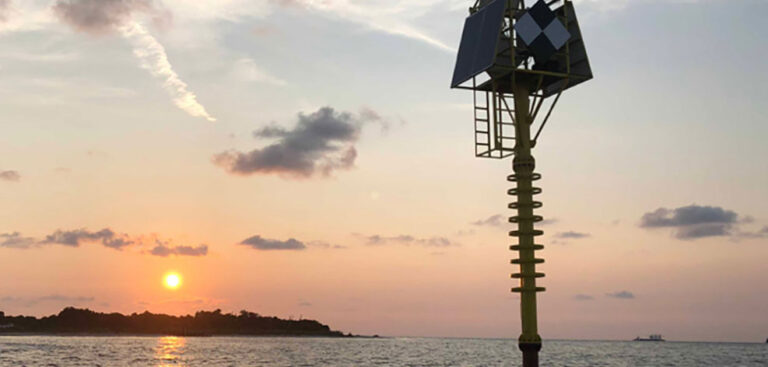A new high-tech buoy that can detect sudden movements of the sea floor could be instrumental in helping to forecast tsunamis, its makers say.
The buoy, which was developed by geoscientists at the University of South Florida, is anchored to the sea floor using a heavy concrete ballast. From there it uses high-precision GPS and a digital compass to capture data on the three-dimensional motion of the sea floor.
A prototype of the buoy developed with the help of a US National Science Foundation grant of US$822,000 has been anchored in shallow waters off Egmont Key in the Gulf of Mexico since last year. As well as surviving the impact of several major storms, including last year’s Hurricane Michael, the buoy is capable of detecting sea floor movements of just a couple of centimeters.
Scientists are particularly interested in detecting side-to-side motion of the sea floor, which can be symptomatic of tsunami-producing earthquakes.
“The technology has several potential applications in the offshore oil and gas industry and volcano monitoring in some places, but the big one is for improved forecasting of earthquakes and tsunamis in subduction zones,” said lead researcher Tim Dixon, a professor at the university’s School of Geosciences. “The giant earthquakes and tsunamis in Sumatra in 2004 and in Japan in 2011 are examples of the kind of events we’d like to better understand and forecast in the future.”
Although there are a number of techniques for sea floor monitoring, most work best in deep water where there is less noise interference. Dixon’s team’s buoy is unique in that it can be deployed in shallow coastal waters of just a few hundred meters depth.
Monitoring these type of environments could be crucial for advancing the understanding of certain types of earthquakes, with the offshore strain accumulation and release processes critical datasets for understanding megathrust earthquakes and tsunamis, according to the researchers.
The next step is to deploy a buoy in deeper water off Florida’s Gulf Coast. After that, the researchers hope to install a version of the system in the shallow coastal waters of earthquake prone Central America.
The team’s findings were recently published in the Journal of Geophysical Research-Solid Earth.



